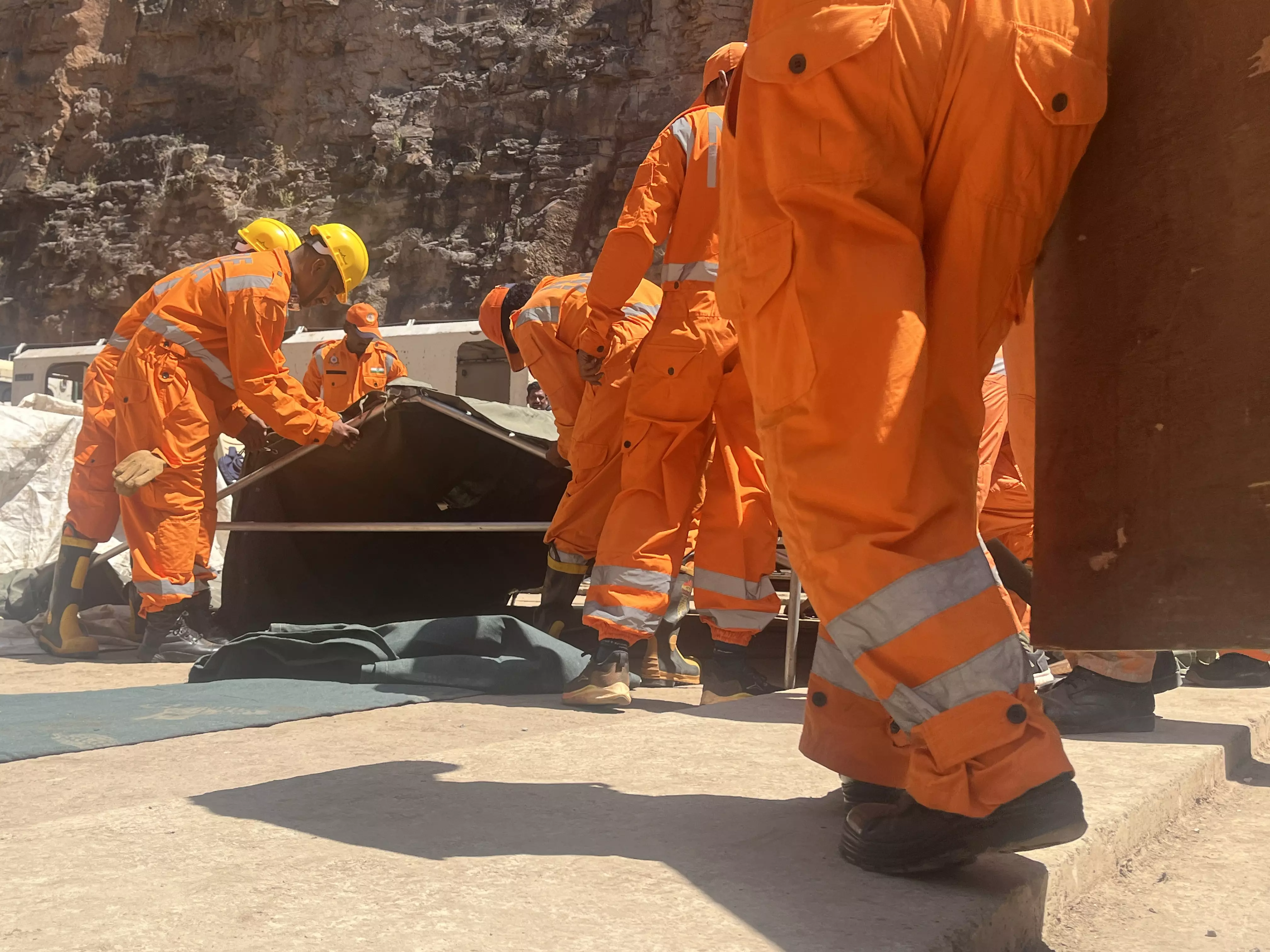Desperate Measures at SLBC Accident Site
However, unwilling to give up, the NDRF, SDRF, and state fire services launched a final, desperate push, throwing every available resource at the challenge.

However, unwilling to give up, the NDRF, SDRF, and state fire services launched a final, desperate push, throwing every available resource at the challenge.
From the outset, those involved in the rescue effort to save eight people trapped in the collapsed SLBC tunnel in Telangana knew the task would be extraordinarily challenging.
Late on Saturday night, the first team of rescuers traveled 12 km to reach the site—10 km by a small train regularly used for personnel transport and the final 2 km on foot, navigating a slippery tunnel floor covered in slush, soft mud, and water that made every step precarious.
“We couldn’t go any further,” said a deputy executive engineer from the irrigation department, who had reached the 10 km mark.
By Sunday afternoon, after 14 hours of intense effort, many began to lose hope. The operation appeared to shift from rescue to recovery, as it seemed impossible to reach the trapped individuals in time.
However, unwilling to give up, the NDRF, SDRF, and state fire services launched a final, desperate push, throwing every available resource at the challenge.
A team armed with gas cutters managed to reach the collapsed section of the tunnel, 13.9 km deep inside, where they began cutting through twisted steel bars and crushed concrete linings. But progress was slow. According to an Army official from its engineering corps, "The only option was to crawl over the debris evacuating conveyor belt system to move forward."
On Saturday night, rescuers even attempted to use the ventilation duct—a large 3-meter-wide pipe—to reach the blocked area. However, they abandoned that idea when they realized how complex it would be.
With time running out and options dwindling, officials resorted to unconventional solutions. Emergency calls went out to nearby villages, asking local fishermen to provide thermacol pontoons they typically use for boats. Munia, a fisherman from Chandrasagar, located 70 km from the site, brought two pontoons, but the team urgently needed 30 more. “Where can we get them from?” he asked.
The idea behind using the pontoons was that they were lightweight and would not sink in the slush, allowing rescuers to get closer to the blocked section.
A temporary hanging bridge made from long bamboo pallets, suspended with ropes, was also planned to give rescuers better access to the tunnel's collapsed area.
Meanwhile, on the surface, medical teams from the Army Medical Corps and ambulances were on standby, ready to treat anyone who could be rescued.
Unfortunately, the wait is expected to be a long one.
( Source : Deccan Chronicle )
Next Story
